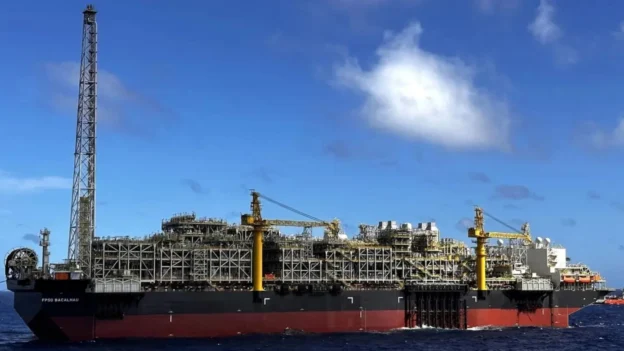With the entry into operation of the FPSO BacalhauFPSO Bacalhau, Brazil adds a new key piece to its offshore infrastructure. Located in the Santos pre-salt basin, this floating production, storage and offloading (FPSO) unit marks the beginning of a stage that promises to transform the operational capacity of energy consortiums operating in deep waters.
Design and features of the FPSO Bacalhau
Designed to operate at a depth of more than 2,000 meters and 185 km off the coast of Ilhabela (São Paulo), Bacalhau has a production capacity of 220,000 barrels of oil per day. Its imposing size – 370 meters in length and 64 meters in beam – makes it one of the world’s most important FPSOs. FPSO technically and environmentally advanced FPSOs.
The FPSO is equipped with combined cycle gas turbines (CCGT), a system that significantly reduces CO₂ emissions intensity, placing it at around 9 kg per barrel produced. This level is approximately half the industry average, positioning the project as a reference in low-carbon production.
A major consortium is driving the project
The field is operated by Equinor (40%), in association with ExxonMobil (40%) and Galp (20%), through Petrogal Brasil. The Brazilian state-owned PPSA also participates. The start-up of the FPSO represents a significant step forward after 25 years since the original signing of the concession contract for block BM-S-8, with Galp as the initial signatory.
Once it reaches full capacity, Bacalhau will contribute around 40,000 barrels per day to Galp’s production, representing a 30% increase in its current extraction volume. This improvement makes the company one of the five largest producers of oil and gas in the world. oil and gas producers in Brazil. producers in Brazil.
During its estimated useful life of 30 years, Bacalhau will contribute nearly 50,000 jobs, of which some 3,000 were generated during the development phase. In addition, 60% of the subsea work in this first phase is in the hands of Brazilian contractors, strengthening the local supply chain.
Source and photo: Galp

